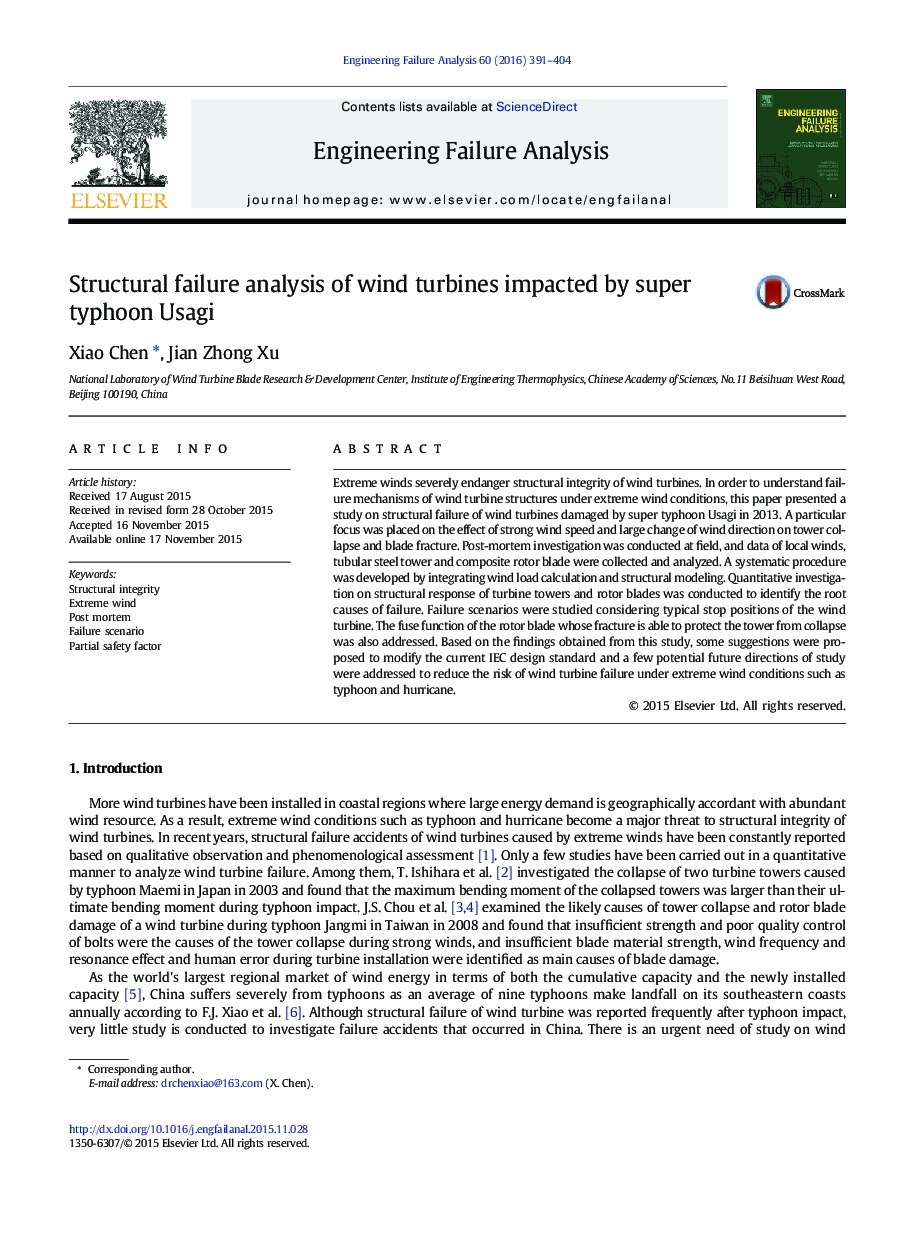| Article ID | Journal | Published Year | Pages | File Type |
|---|---|---|---|---|
| 773670 | Engineering Failure Analysis | 2016 | 14 Pages |
•We studied structural failure of wind turbines damaged by a super typhoon.•Tower collapse and blade fracture were justified by structural analysis.•Plausible root-causes were overstress/strain in tower/blade.•Stop position of wind turbines had critical importance to their failure.•Rotor blade showed fuse function to protect tower from collapse.
Extreme winds severely endanger structural integrity of wind turbines. In order to understand failure mechanisms of wind turbine structures under extreme wind conditions, this paper presented a study on structural failure of wind turbines damaged by super typhoon Usagi in 2013. A particular focus was placed on the effect of strong wind speed and large change of wind direction on tower collapse and blade fracture. Post-mortem investigation was conducted at field, and data of local winds, tubular steel tower and composite rotor blade were collected and analyzed. A systematic procedure was developed by integrating wind load calculation and structural modeling. Quantitative investigation on structural response of turbine towers and rotor blades was conducted to identify the root causes of failure. Failure scenarios were studied considering typical stop positions of the wind turbine. The fuse function of the rotor blade whose fracture is able to protect the tower from collapse was also addressed. Based on the findings obtained from this study, some suggestions were proposed to modify the current IEC design standard and a few potential future directions of study were addressed to reduce the risk of wind turbine failure under extreme wind conditions such as typhoon and hurricane.
